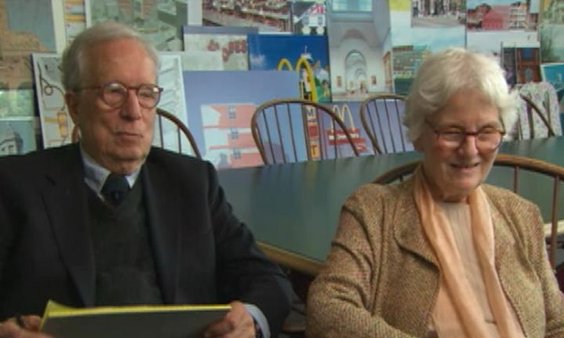NEXT STORY

Tsinghua University in Beijing (Part 2)
RELATED STORIES

NEXT STORY

Tsinghua University in Beijing (Part 2)
RELATED STORIES


|
Views | Duration | |
|---|---|---|---|
| 71. Learning from lofts | 56 | 03:40 | |
| 72. History of Philadelphia and its architecture (Part 1) | 59 | 05:56 | |
| 73. History of Philadelphia and its architecture (Part 2) | 36 | 07:09 | |
| 74. Downtown Memphis, Tennessee | 140 | 04:47 | |
| 75. Campus planning for Dartmouth College | 49 | 03:01 | |
| 76. How sections could have helped New Orleans | 27 | 01:13 | |
| 77. Palmer Drive Life Sciences Complex | 33 | 03:49 | |
| 78. Tsinghua University in Beijing (Part 1) | 53 | 04:14 | |
| 79. Tsinghua University in Beijing (Part 2) | 53 | 06:08 | |
| 80. Lecturing | 43 | 06:58 |


[DSB] When it came to Tsinghua, the… we were approached there by academic administrators who had been in America and they loved Princeton. And they said, ‘We see a cultural landscape there’. That’s what they called it, which was interesting because we use the same term. ‘A cultural landscape and we know we don’t have it and we want to be a world leading university.’ They see themselves as Princeton and MIT wrapped in one. And Princeton is plenty good enough for them to be compared to, they feel. So, they say, ‘It’s not just a question of producing a landscape. Tell us educationally what it means?’ And so, they used us for the experience we’ve now had working with many universities, going from educational policy to land use, and then to building.
And so, the first thing I did was give a… the most beautiful lecture hall I’ve ever been in. It was made like a, you know, a Chinese temple, to these academic administrators – very bright people – a lecture on the history on American urban campuses, as a set of themes… themes and ideas – educational ideas, related to philosophies of landscape and building. And just surveying the development and the origins and why education had the place it had in America and in a nation of immigrants – why education is so important. And so, why everyone sees this as their way out and hold their kids over their heads and put them in the university. And so, I tried to explain from all these points of view.
And then, we starting mapping their campus and they said, ‘After such a short time, how do you know so much about our campus?’ Well, it’s because we look at it visually. They had a very good Institute there, as they call it, which could give us the information and then we could map it our way to show relationships. And something I remember, watching an early morning TV program on statistics and they had animated the statistics and you saw a rolling pattern of events going by. I don’t know what they were showing but it was spectacular that the whole thing rolled once you animated it. And they said, ‘Even with computers, it would have taken us many, many months of study before we recognised the circularity and the variables. Physically, looking at it, we saw it immediately’. And that’s the same thing we do, we can see something by the pattern it makes, because we love pattern and we’re used to looking at aerial photographs and land use maps. We can see things which we can then work on.
I have another funny little story. In talking about the coffee shops and no coffee shops, and you can’t get a good cup of coffee on the North Campus, and you can’t get, you know, much of anything after five pm.
At Michigan?
[DSB] At Michigan, finally the Head of the Publishing Department… the Head of the University Press, he was an Englishman. By the way, next time I saw him, he was in Hong Kong heading the University Press there. But there he was in Michigan, and he said, ‘You’re saying that you can’t manage to find a good cup of coffee anywhere on the North Campus? I can’t even find a bad cup of coffee where I am on the South Campus, near the Athletics Center’. So, I’d started then looking at the South Campus, looking at the patterns there, where were the movement patterns and where were the retail patterns? Where could I find a place for Colin to get a bad cup of coffee? So, I found my site and we went looking on the South Campus and I went to look at the site. It was a little cottage and I couldn’t believe it. It had a notice in it – it said, Coffee Shop coming. Those are the great rewards.
Internationally renowned architects Robert Venturi (1925-2018) and Denise Scott Brown (b.1931) have helped transform contemporary design through their innovative architecture and planning. Winners of numerous prestigious awards, their designs have championed multiculturalism, social activism, symbolism, pop culture, history and evolving technologies.
Title: Tsinghua University in Beijing (Part 1)
Listeners: Thomas Hughes
Thomas Hughes is Mellon Professor Emeritus of the History of Science at the University of Pennsylvania and Distinguished Visiting Professor at the Massachusetts Institute of Technology. His most recent books include Human Built World, Rescuing Prometheus and American Genesis. He is a member of the American Philosophical Society, US National Academy of Engineering, Royal Swedish Academy of Engineering Sciences and the American Academy of Arts and Sciences.
Duration: 4 minutes, 14 seconds
Date story recorded: 22nd to 23rd September 2006
Date story went live: 27 May 2010